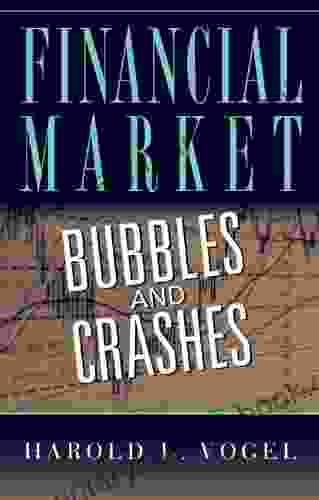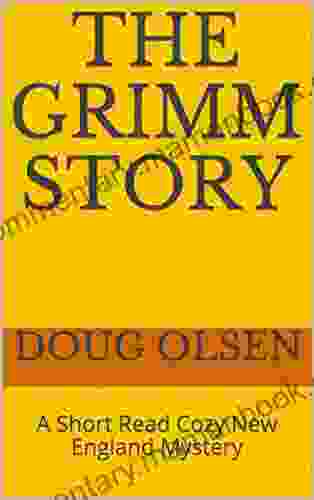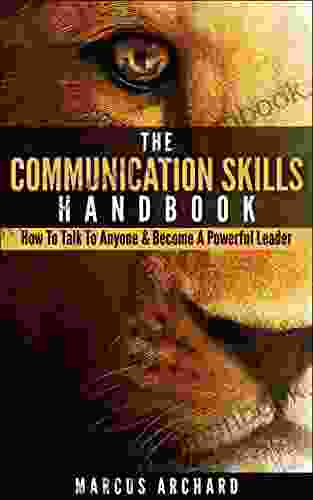Financial Market Bubbles and Crashes: A Comprehensive Guide

Financial market bubbles and crashes are a recurring phenomenon that have plagued investors for centuries. In this article, we will explore the causes, consequences, and warning signs of financial market bubbles and crashes.
4 out of 5
| Language | : | English |
| File size | : | 10581 KB |
| Text-to-Speech | : | Enabled |
| Enhanced typesetting | : | Enabled |
| Word Wise | : | Enabled |
| Print length | : | 384 pages |
| Screen Reader | : | Supported |
What is a Financial Market Bubble?
A financial market bubble is a period of rapid price increases in an asset or group of assets. These price increases are often driven by speculation and a belief that the asset will continue to appreciate in value. Bubbles can occur in any type of asset, including stocks, bonds, real estate, and commodities.
Causes of Financial Market Bubbles
There are a number of factors that can contribute to the formation of a financial market bubble. These factors include:
- Low interest rates: Low interest rates can make it more attractive for investors to borrow money to invest in assets. This can lead to increased demand for assets and higher prices.
- Easy credit: Easy credit can also contribute to the formation of bubbles. When credit is easy to obtain, investors may be more willing to take on more risk. This can lead to a surge in investment in certain assets.
- Speculation: Speculation is another major factor that can contribute to bubbles. Speculators are investors who buy assets in the hopes of selling them for a profit. When a large number of speculators enter a market, it can drive prices higher.
- FOMO (fear of missing out): FOMO is a powerful force that can drive investors to buy assets during a bubble. When prices are rising rapidly, investors may fear that they will miss out on profits if they do not invest. This can lead to a further increase in demand and higher prices.
Consequences of Financial Market Bubbles
Financial market bubbles can have a number of negative consequences. These consequences include:
- Losses for investors: When a bubble bursts, prices can fall rapidly. This can lead to significant losses for investors who bought assets at inflated prices.
- Economic recession: Bursting bubbles can also lead to economic recessions. When investors lose money, they are less likely to spend money on goods and services. This can lead to a decline in economic activity.
- Loss of confidence in financial markets: Bursting bubbles can also damage confidence in financial markets. Investors who lose money may become less willing to invest in the future.
Warning Signs of Financial Market Bubbles
There are a number of warning signs that can indicate that a financial market bubble is forming. These warning signs include:
- Rapidly rising prices: One of the most obvious warning signs of a bubble is rapidly rising prices. When prices are rising faster than can be justified by fundamentals, it is a sign that a bubble may be forming.
- Increased speculation: Another warning sign of a bubble is increased speculation. When a large number of investors are buying assets in the hopes of selling them for a profit, it is a sign that a bubble may be forming.
- FOMO: FOMO is another warning sign of a bubble. When investors are afraid of missing out on profits, it is a sign that a bubble may be forming.
- High levels of debt: High levels of debt can also contribute to the formation of a bubble. When investors borrow money to buy assets, they are increasing their risk. This can lead to a bubble if prices fall.
How to Avoid Financial Market Bubbles
There is no surefire way to avoid financial market bubbles. However, there are a few things that investors can do to reduce their risk of investing in a bubble. These things include:
- Understand the risks: Before investing in any asset, it is important to understand the risks involved. Investors should be aware of the potential for bubbles and should not invest more money than they can afford to lose.
- Diversify your investments: One of the best ways to reduce your risk of investing in a bubble is to diversify your investments. This means investing in a variety of assets, including stocks, bonds, real estate, and commodities. Diversification can help to reduce your risk if one asset class experiences a bubble.
- Avoid FOMO: FOMO is a powerful force that can drive investors to make poor investment decisions. Investors should be aware of their own FOMO and should not let it influence their investment decisions.
- Stick to a long-term investment strategy: Long-term investors are less likely to be affected by bubbles. When prices are rising rapidly, it is tempting to sell your assets and take profits. However, this can be a mistake. If you sell your assets during a bubble, you may miss out on the opportunity to make even more money when the bubble bursts.
Financial market bubbles and crashes are a recurring phenomenon that investors should be aware of. By understanding the causes, consequences, and warning signs of bubbles, investors can reduce their risk of investing in a bubble. Investors should also diversify their investments and stick to a long-term investment strategy to reduce their risk of financial loss.
4 out of 5
| Language | : | English |
| File size | : | 10581 KB |
| Text-to-Speech | : | Enabled |
| Enhanced typesetting | : | Enabled |
| Word Wise | : | Enabled |
| Print length | : | 384 pages |
| Screen Reader | : | Supported |
Do you want to contribute by writing guest posts on this blog?
Please contact us and send us a resume of previous articles that you have written.
 Top Book
Top Book Novel
Novel Fiction
Fiction Nonfiction
Nonfiction Literature
Literature Paperback
Paperback Hardcover
Hardcover E-book
E-book Audiobook
Audiobook Bestseller
Bestseller Classic
Classic Mystery
Mystery Thriller
Thriller Romance
Romance Fantasy
Fantasy Science Fiction
Science Fiction Biography
Biography Memoir
Memoir Autobiography
Autobiography Poetry
Poetry Drama
Drama Historical Fiction
Historical Fiction Self-help
Self-help Young Adult
Young Adult Childrens Books
Childrens Books Graphic Novel
Graphic Novel Anthology
Anthology Series
Series Encyclopedia
Encyclopedia Reference
Reference Guidebook
Guidebook Textbook
Textbook Workbook
Workbook Journal
Journal Diary
Diary Manuscript
Manuscript Folio
Folio Pulp Fiction
Pulp Fiction Short Stories
Short Stories Fairy Tales
Fairy Tales Fables
Fables Mythology
Mythology Philosophy
Philosophy Religion
Religion Spirituality
Spirituality Essays
Essays Critique
Critique Commentary
Commentary Glossary
Glossary Bibliography
Bibliography Index
Index Table of Contents
Table of Contents Preface
Preface Introduction
Introduction Foreword
Foreword Afterword
Afterword Appendices
Appendices Annotations
Annotations Footnotes
Footnotes Epilogue
Epilogue Prologue
Prologue Paul Dickson
Paul Dickson Hiag Akmakjian
Hiag Akmakjian Scott Blade
Scott Blade Helen Fields
Helen Fields D L Heather
D L Heather Stephen Batchelor
Stephen Batchelor Sachin Kumar
Sachin Kumar Nancy Atherton
Nancy Atherton Bridgette Sharp
Bridgette Sharp Marla Benavides
Marla Benavides C K Gunsalus
C K Gunsalus Peter Steiner
Peter Steiner Danielle Gomez
Danielle Gomez Chuck Whelon
Chuck Whelon Willa Cather
Willa Cather Sara Sheridan
Sara Sheridan Jonathan Cahn
Jonathan Cahn Laurie Pfalzer
Laurie Pfalzer Douglas E Richards
Douglas E Richards David R Howell
David R Howell
Light bulbAdvertise smarter! Our strategic ad space ensures maximum exposure. Reserve your spot today!
 Isaiah PowellFollow ·18.9k
Isaiah PowellFollow ·18.9k Chadwick PowellFollow ·5.7k
Chadwick PowellFollow ·5.7k Jack LondonFollow ·4.2k
Jack LondonFollow ·4.2k Gerald ParkerFollow ·19.6k
Gerald ParkerFollow ·19.6k Desmond FosterFollow ·15.1k
Desmond FosterFollow ·15.1k Marc FosterFollow ·4.8k
Marc FosterFollow ·4.8k William ShakespeareFollow ·3.6k
William ShakespeareFollow ·3.6k Don ColemanFollow ·17.5k
Don ColemanFollow ·17.5k

 Kelly Blair
Kelly BlairSheppard Lee Written By Himself: A Journey of...
In the realm of...

 George Bernard Shaw
George Bernard ShawViper Naga Brides: Unveiling the Enthralling Fantasy...
In the realm of...

 Neil Gaiman
Neil GaimanOnce Upon a Hill in Tuscany: A Medieval Short Story
In the heart of medieval...

 Preston Simmons
Preston SimmonsBody Bereft: Exploring Loss, Love, and Legacy in Antjie...
A Poetic Requiem for the Lost:...

 Percy Bysshe Shelley
Percy Bysshe ShelleyThe Amazing Story Of Robert Smalls Escape From Slavery To...
The life of Robert Smalls is a testament to...
4 out of 5
| Language | : | English |
| File size | : | 10581 KB |
| Text-to-Speech | : | Enabled |
| Enhanced typesetting | : | Enabled |
| Word Wise | : | Enabled |
| Print length | : | 384 pages |
| Screen Reader | : | Supported |













